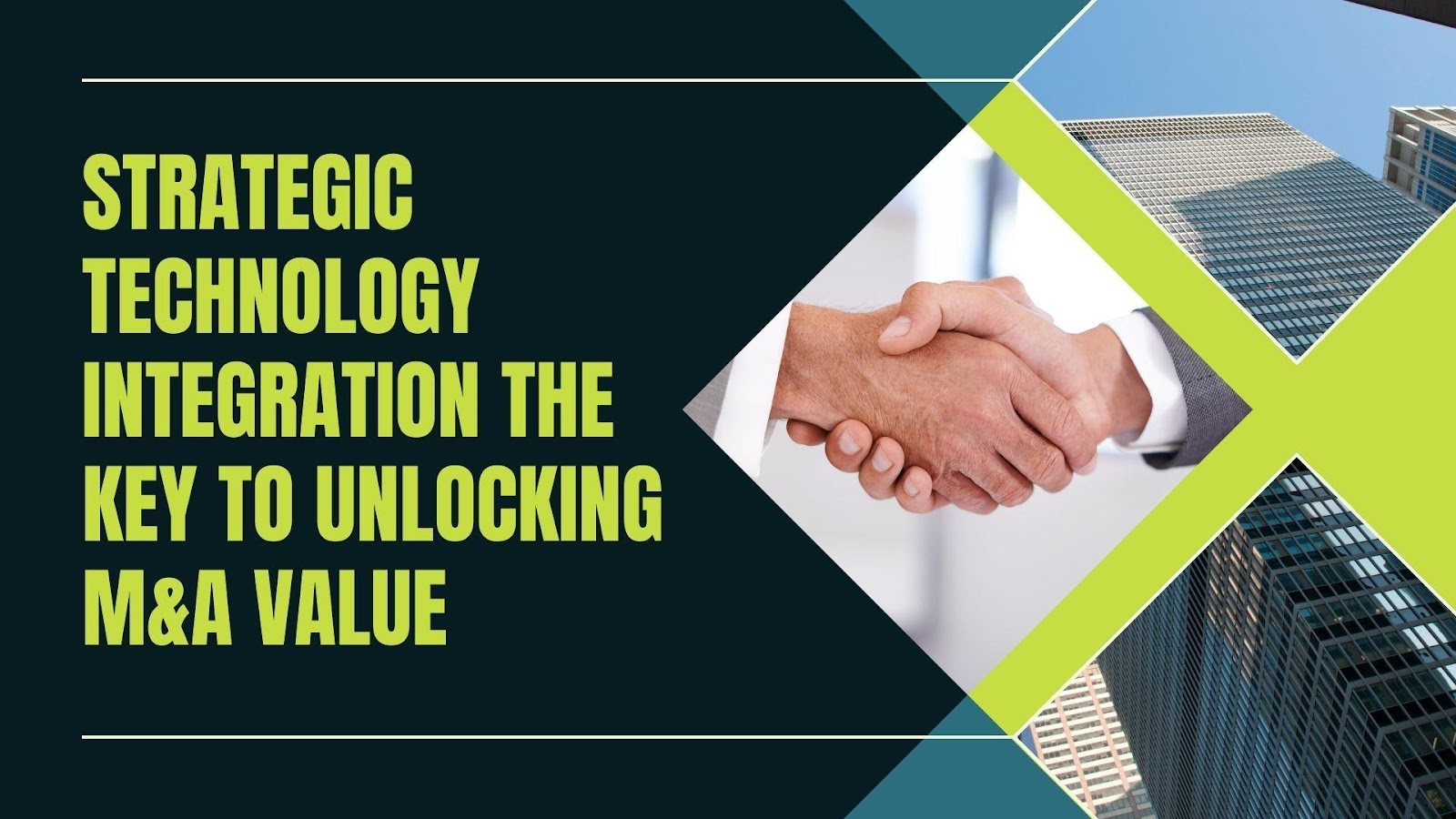In this modern era, mergers and acquisitions (M&A) are complex undertakings, and one of the most crucial yet challenging aspects is technology integration. With the rapid advancement of digital transformation, businesses must adapt to innovative solutions to stay competitive. In her research, Amrita Chatterjee explores how a well-executed technology integration strategy can drive post-merger success by streamlining systems, improving data management, and accelerating value realization. This article delves into the critical innovations transforming M&A technology integration and their impact on business efficiency.
Harmonizing Technology for Seamless Integration
In the modern M&A landscape, fragmented IT systems often lead to operational inefficiencies and delayed synergy realization. Organizations that implement structured integration protocols across their technology stack experience a significantly higher success rate than those adopting ad-hoc approaches. Companies focusing on platform unification, data governance, and system compatibility from the due diligence phase are 2.7 times more likely to achieve their desired integration outcomes.
Data Platform Unification: The Backbone of Integration Success
One of the most critical elements of M&A technology integration is data platform unification. Organizations leveraging cloud-native architectures achieve faster security integration and significantly lower network-related costs. Implementing direct-to-cloud architectures reduces network complexity by 70%, ensuring seamless application availability. Automated data governance frameworks also play a pivotal role, enabling companies to resolve 85% of data inconsistencies within the first two months post-merger.
The Role of Advanced Risk Assessment
Strategic risk assessment is integral to successful M&A technology integration. Companies that dedicate time to structured technology evaluations before the merger reduce integration-related disruptions by approximately 40%. Key evaluation areas include systems architecture compatibility, data complexity, infrastructure scalability, and technical debt assessment. By addressing these challenges early, businesses can create a roadmap that mitigates risk and accelerates post-merger alignment.
Agile Integration Planning for Accelerated Value Capture
Organizations that establish clear integration planning frameworks achieve their synergy targets 2.3 times faster than those following unstructured methods. Successful integrators spend an average of 18 weeks on detailed planning, focusing on risk mitigation, governance structures, and cross-functional dependencies. Developing realistic integration timelines with critical path analysis helps reduce project delays by 45%, ensuring business continuity during the transition.
Security and Compliance in the Digital M&A Era
Security remains a top concern in technology-driven M&A transactions. Companies implementing software-defined perimeter (SDP) approaches achieve compliance verification 3.2 times faster than traditional methods. Micro-segmentation strategies reduce the attack surface by 90%, ensuring secure data transfers and minimizing vulnerabilities. Businesses utilizing cloud-native security platforms successfully integrate security policies across merged entities within 12 weeks—significantly faster than the industry average.
Maximizing ROI Through Advanced Analytics
The use of data analytics in M&A integration is reshaping value realization strategies. Organizations that employ AI-driven synergy tracking report 39% higher synergy capture rates and achieve value realization 12 months faster than traditional methods. Analytics-driven frameworks improve deal value capture by 61%, reducing value leakage and optimizing resource allocation. Businesses leveraging machine learning for performance tracking achieve an impressive 92% accuracy in synergy forecasting.
A Phased Approach to Technology Integration
A structured, phased approach to integration enables organizations to achieve milestones efficiently. Companies implementing three-stage integration—Quick Wins (0-100 days), Core Integration (4-12 months), and Optimization (12-24 months)—report a 42% higher success rate in synergy realization. Establishing clear governance structures during implementation also reduces integration-related delays by 28%, ensuring a smoother transition.
The Future of M&A Technology Integration
Emerging technologies are redefining M&A integration. Organizations adopting agile methodologies achieve system consolidation goals 37% faster than those using traditional waterfall models. The adoption of automated testing frameworks helps detect 71% of integration issues during pre-implementation, minimizing disruptions. Cloud-based platforms further streamline data migration and infrastructure optimization, improving integration efficiency by 52%.
In conclusion, M&A transactions necessitate a strategic approach to technology integration. Amrita Chatterjee‘s research highlights that companies with structured integration roadmaps, robust data governance frameworks, and advanced risk assessment methodologies achieve superior post-merger outcomes. As organizations refine their integration strategies, the key to maximizing M&A value lies in leveraging technology, fostering collaboration, and maintaining a focus on long-term synergies.
Disclaimer: The views and opinions expressed in this article are those of the author and do not necessarily reflect the views or positions of any entities they represent or by whom they are employed.





























